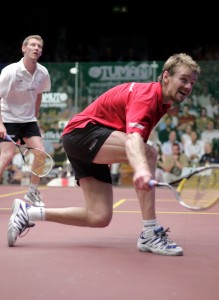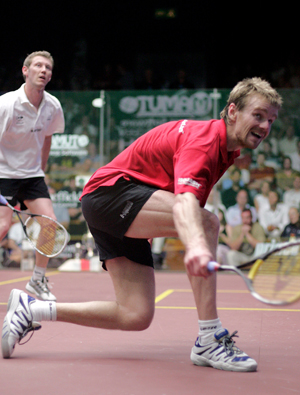
By Damon Leedale-Brown, Sports Scientist & Conditioning Specialist
Take time to watch the top players in the world in action and observe how well they are able to control speed and movement onto the ball even when the initial approach has been quick. Their skill in making this look relatively easy is linked to their physical ability to decelerate and control speed, combined with an excellent understanding of spacing and positioning on the court in relation to the ball.
So how does this benefit their performance? They are well-balanced on the shot and, as a result, much more likely to control the ball with the accuracy and consistency required at this level; they are in an excellent position to facilitate their recovery away from the ball and be ready for the next phase of the rally; and the composure in their movement creates a sense of time and mental composure on the ball typically leading to a higher level of thought and understanding in every ball they hit. All this generally creates a much better awareness of the court and both their own and their opponent’s positioning.
To understand this a little further, let’s talk about speed around the squash court. Given the very short distances you are moving on the court (a few yards at most), you will never be anywhere near close to maximal running speed— indeed running on the squash court is generally a reflection of a player out of position and out of control in the rally! For me the essence of speed on the squash court is based around developing speed (acceleration) and controlling speed (deceleration). Both are essentially related to our abilities as athletes to develop and control force quickly. Typical conditioning programs in many sports have a strong emphasis on the ‘Going’ phase (acceleration) but often lack any real focus or understanding of the ‘Slowing’ phase (deceleration).
The next time you are involved in a match, try being aware of your approach and positioning onto the ball: are you generally in balanced and composed positions when you are hitting the ball or do you feel more a sense of falling through or away from the shot? Do you feel like you are controlling your speed onto the ball or approaching with too much speed resulting in falling through your shots, crowding the ball and compromising both technique and shot choices?
Often in the heat of a match it is difficult to feel exactly how you are moving, and this is where a video of one of your matches can be a really powerful tool. Video is also a great resource for coaches who can sit down with their players and really analyze how the player is moving on and off their shots, and the positive or potentially negative impact this has on the player’s performance.
Hopefully this article has provided you with a better understanding of deceleration and controlling speed and why it is such an important aspect of the game. In the next issue, I will begin to look at some training techniques designed to help improve a player’s ability to decelerate and slow down more effectively on the squash court.





